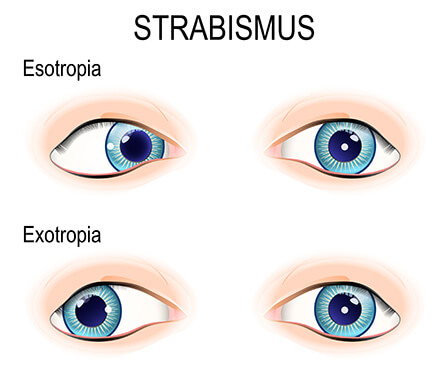 Strabismus is a disorder in which the eyes are not aligned properly. One eye may look straight ahead, while the other eye turns inward, outward, upward or downward. The eye turn may be constant or intermittent and the alignment may be constant or change as well.
Strabismus is a disorder in which the eyes are not aligned properly. One eye may look straight ahead, while the other eye turns inward, outward, upward or downward. The eye turn may be constant or intermittent and the alignment may be constant or change as well.
Strabismus is a common condition among children. Roughly 4% US children have strabismus but it may occur later in life due to injury or illness.
Strabismus may run in families but the correlation is low and there is no preference of gender or known chromosomal attachment.
Not much is known about the cause of Strabismus, but it’s believed to be due to lack of muscles control during eye movement.
There are 6 extraocular muscles attached to the outside of each eye. These muscles determine the movement of each eye and the degree of movement.
In order to clearly focus on a single target, all of the muscles in each eye must be properly yolked and sending/receiving proper communication from the brain.
With normal vision, both eyes aim at a target and the brain combines the two images into a single, 3D image, creating depth perception.
When one eye is misaligned, the two images sent to the brain are different and cannot be combined. Often times, young children learns to ignore one image and only process the image from the aligned eye, losing depth perception.
Adults are unable to suppress an image the way a young child will so they will see double.
When strabismus is caused by a brain injury or disease, a child’s brain may not correctly combine the two images. Children typically experience strabismus from underlying condtions that require the use of lenses.


